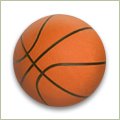
- Increased muscle strength
- Increased muscle power
- Improved balance
- Enhanced agility
- Increased speed
- Enhanced sports performance
- Reduced risk of knee injuries in female athletes ( http://www.ncbi.nlm.nih.gov/sites/entrez?Db=pubmed&Cmd=ShowDetailView&TermToSearch=16686562&ordinalpos=1&itool=EntrezSystem2.PEntrez.Pubmed.Pubmed_ResultsPanel.Pubmed_RVDocSum )
What are Some Different Types of Plyometric Exercises?
When most people think of plyometric exercises, they imagine someone doing jumps over hurdles or off of tall jump boxes while they wear special shoes.
But plyometrics can be as simple as skipping rope or doing jumping jacks. There are hundreds of exercises with thousands of variations that can be used to design an effective plyometrics program: cone hops, backward hops, single leg jumps, double leg jumps, power skipping, hurdle jumps, box jumps, alternate leg bounding... you get the picture.
Dangers of Plyometrics
Because of its emphasis on quick, repetitive eccentric/concentric muscle contractions, plyometrics tends to cause more muscle damage than some other types of exercises. Too much plyometrics (in amount or intensity) for a teenager can lead to muscle soreness and decreased performance. Too much plyometrics for a younger athlete can lead to tendon injuries.
So what should you look for in a good plyometrics program? More to come.......













